Quinoa, bear, sturgeon and other delights of the old Slavonic cuisine
Categories: Food and Drinks | History
By Pictolic https://pictolic.com/article/quinoa-bear-sturgeon-and-other-delights-of-the-old-slavonic-cuisine.htmlWhat are you having for dinner? Vegetable salad, fried potatoes with chicken? These dishes have become familiar, some of them we have native Russian. For a few hundred years they are firmly established in our diet. And I can not believe that once people did without the usual potatoes, tomatoes, sunflower oil, not to mention the cheese or the pasta.
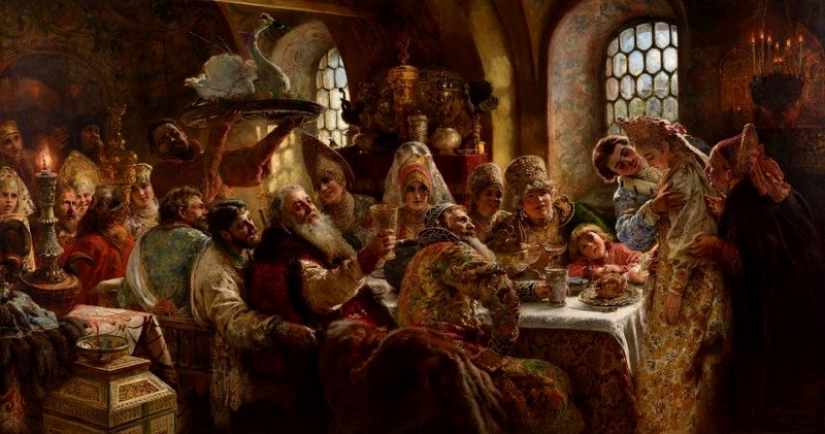
Food was always a major issue in people's lives. Depending on the climate and natural resources each nation has more or less developed hunting, herding and crop production. When in the IX century Kyiv Rus was formed as a state, the diet of the Slavs were flour products, cereals, dairy products, meat and fish.
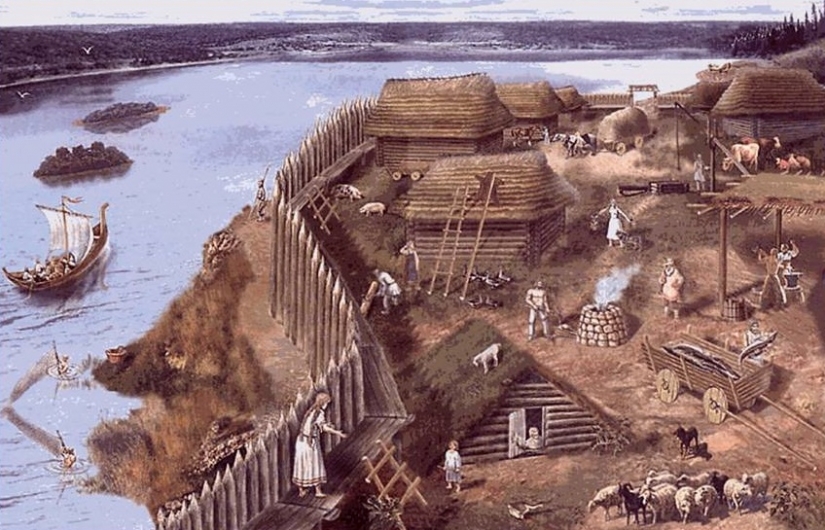
From cereal grown barley, oats, wheat and buckwheat, a bit later, rye. Of course, the staple food was bread. In southern regions it was baked from wheat flour in the North was widespread rye. In addition bread is also baked pancakes, muffins, cakes, holidays, pies (often from pea flour). Pies can be with different fillings: meat, fish, mushrooms and berries.
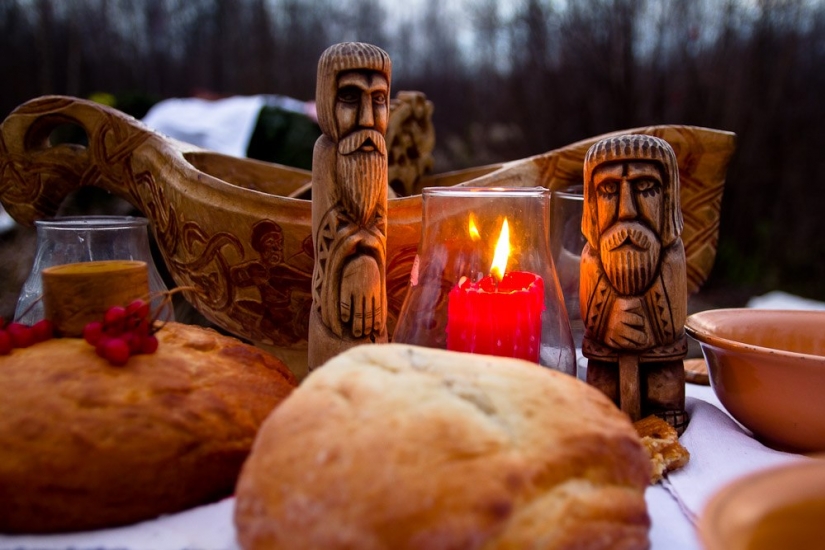
Cakes were prepared either from fresh dough (such as it is now used for meat and vegetable dumplings), or sour. It is called so, because it's really sour (I vasilos) in a special vessel — the kneading trough. The first time I made the dough from flour and well or river water and put in a warm place. After a few days the dough would start to bubble — this worked a wild yeast that is always in the air. Now it could be the oven.
When baking bread or pies in the trough left a bit of dough, called leaven, and the next time only added to ferment the desired amount of flour and water. Every family starter lived for many years, and the bride if she has gone to live in their own house, received a dowry and the dough with leaven.
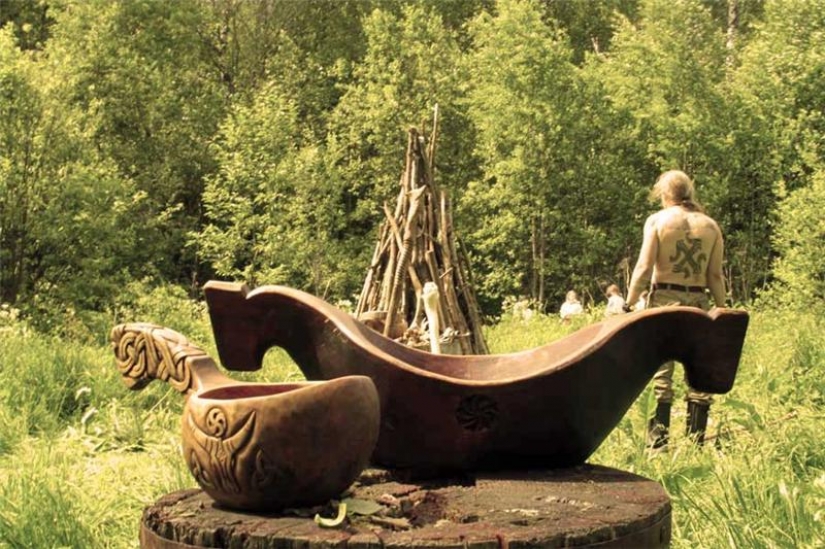
Since time immemorial, one of the most common sweet dishes considered jelly. In Ancient Russia the jelly was made on rye, oat and wheat decoctions, sour taste, and having a grayish-brown color, and resembled the color of a coastal loamy soil of the Russian river. The jelly was bouncy, reminiscent of jelly, jelly. Because sugar in those days was not yet, for taste they added honey, jam or berry syrups.
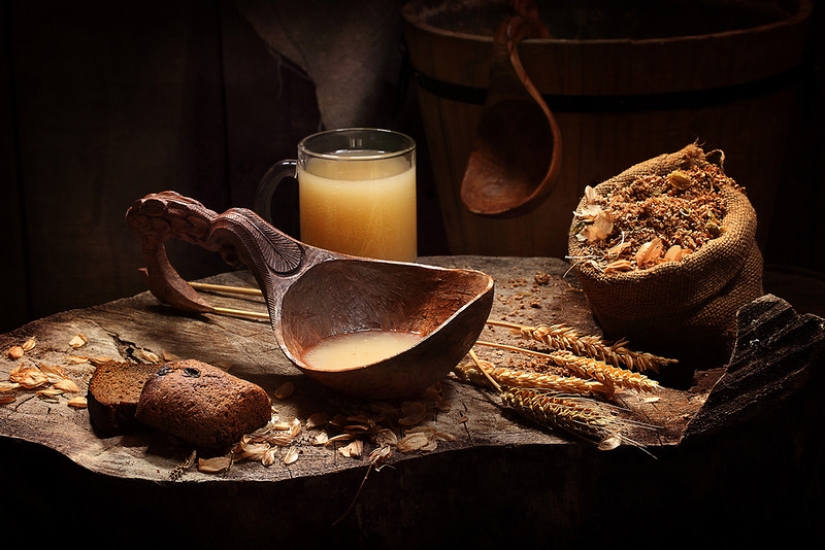
In Ancient Rus was a very popular cereal. Mainly wheat or oats, whole-wheat, which have long been steamed out in a furnace below it was soft. Great delicacy was rice (sorochinskoe millet) and buckwheat, which appeared in Russia together with the Greek monks. Kashi refueled butter, flax or hemp oil.

Interesting situation in Russia was with vegetable products. What we know now, was not in sight. The most common vegetable was radish. It differed from the modern and was at times more. Also mass was spread turnips. These root vegetables stewed, fried and made of them a stuffing for pies. Since ancient times in Russia the well-known pea. It is not only cooked, but made from flour from which they baked pancakes and pies. In the XI century on the tables begins to appear onions, cabbage, a few days later, the carrots. Cucumbers will appear only in the XV century. And familiar to us nightshade family — potatoes, tomatoes and eggplant came to us only in the beginning of the XVIII century.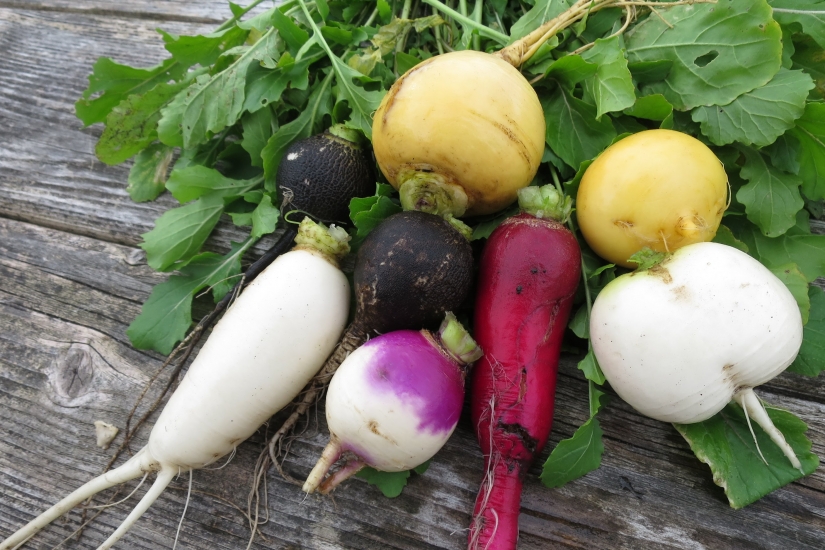
In addition, in Russia from plant foods ate wild sorrel and quinoa. Complement the vegetable diet of the many wild berries and mushrooms.
Of animal food was known to us beef, pork, chickens, geese and ducks. Horse meat and ate a little, mostly military during campaigns. Often the tables had wild game meat: venison, boar and even bear meat. Also were eaten partridge, grouse and other game. Even extended their influence of the Christian Church, who considered unacceptable the use in food of wild animals are unable to eradicate this tradition. Meat was roasting on the coals, on a spit (verenae) or, as most of the dishes are stewed in large chunks in the oven.
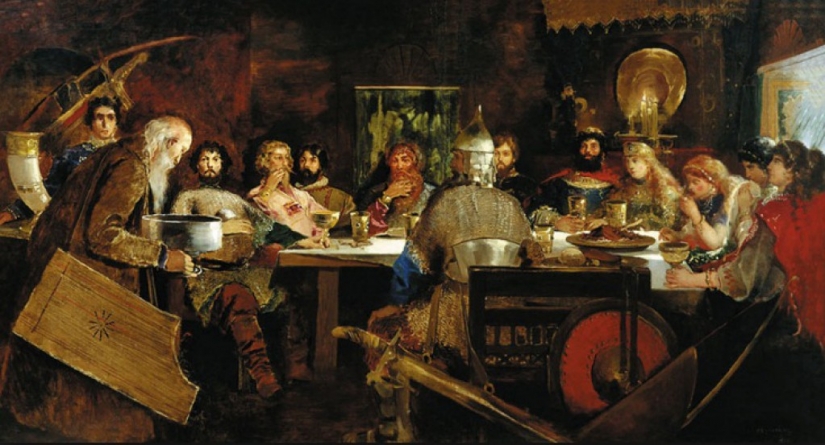
Quite often people ate fish. Mostly it was river fish: sturgeon, sterlet, bream, perch, ruff, perch. It boiled, baked, dried and salted.
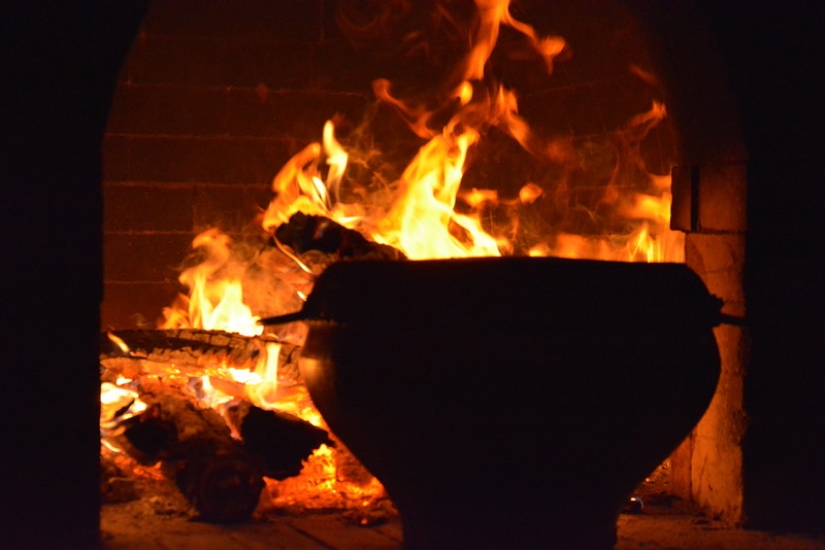
In Russia there was soups. The famous Russian fish soup, borsch and Solyanka appeared only in XV—XVII centuries of ekah. Was "ture" — the predecessor of okroshka, kvass with chopped onion, seasoned bread.
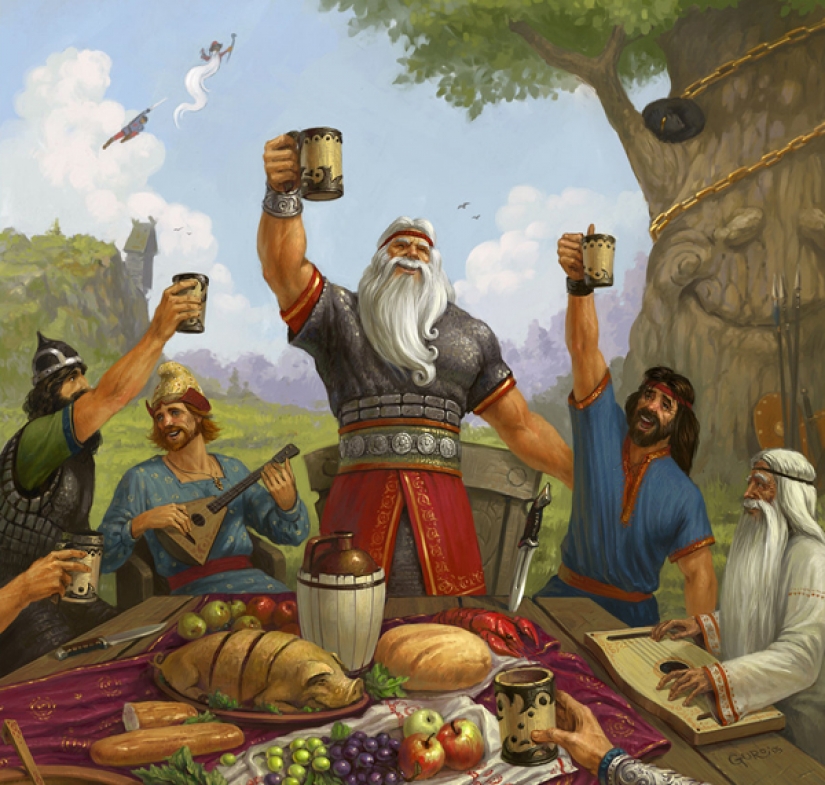
In those days, as in ours, the Russian people did not avoid drinking. According to the "Tale of bygone years", the main reason of the failure of Vladimir from Islam was the sobriety prescribed by the religion.
Russian drink for the modern reader is associated with vodka, but in the era of Kievan Rus did not drive alcohol. Consumed three types of beverages: kvass, honey, and wine.Kvass, non-alcoholic or slightly intoxicating drink made from rye bread. It was something like beer. He probably was the traditional drink of the Slavs, as it was mentioned in records about the journey, the Byzantine envoy to Attila leader of the Huns in the early fifth century, along with the honey.
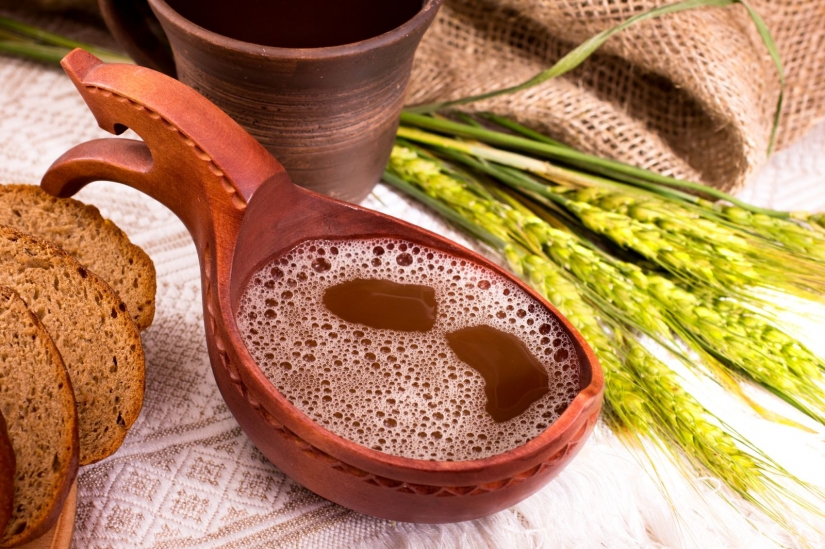
The honey was extremely popular in Kievan Rus. It was brewed and drank as lay people and monks. According to the chronicle, Prince Vladimir the Red Sun ordered three hundred boilers of honey on the occasion of the opening of the Church in Vasyliv. In 1146, Prince Iziaslav II was discovered in the cellars of his opponent Svyatoslav five hundred barrels of honey, and eighty barrels of wine. Has been known for several varieties of honey: sweet, dry, with pepper and so on. Drinking and wine: wine was imported from Greece, and, except for princes, churches and monasteries are regularly imported wine for the administration of the Liturgy.
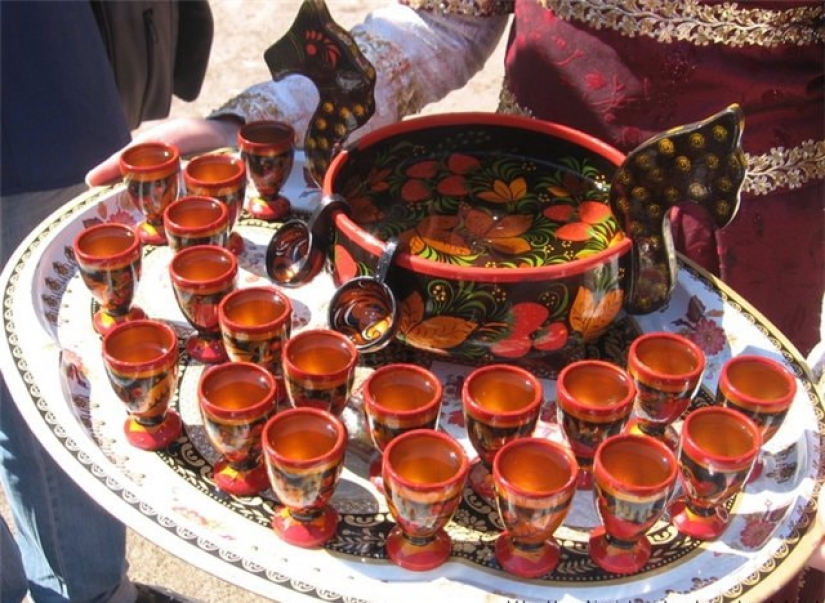
This was the old kitchen. But what is Russian cuisine and how it is connected with old Church Slavonic? For several centuries, changed the life, customs, expanded trade relations, the market filled with new products. Russian cuisine has absorbed a large number of national dishes of different peoples. Something has been forgotten or displaced by other products. However, the main trends in old Slavonic cuisine in one form or another have survived to the present day. This dominant position of bread on our table, a wide range of pastries, cereals, cold cuts. So Russian cuisine is not something isolated, as a logical continuation of the old Slavonic cuisine, despite the fact that over the centuries has undergone significant changes.
What do you think about this?
Keywords: Dishes | Dish | Ancient Rus | The kitchen | The Slavs | The traditions of
Post News ArticleRecent articles

Ideally, veganism involves not only the rejection of eating animal products. It is a way of life where there are products which ...

Mexican photographer Jacob Sadrak is rightfully considered one of the masters of fashion photography in Latin America. His work has ...
Related articles

We present you a country study guide to different countries of the world for real sweet lovers — a dozen of the most delicious ...

Modern Russians are far removed from the gastronomic habits of their ancient ancestors. Our menu is firmly established unknown ...

Each country has its own culinary traditions. As a rule, regional dishes are based on local ingredients and spices, and their ...

Do you like to cook, buy food for the future, but the short life of vegetables and fruits does not give you peace of mind? There is ...